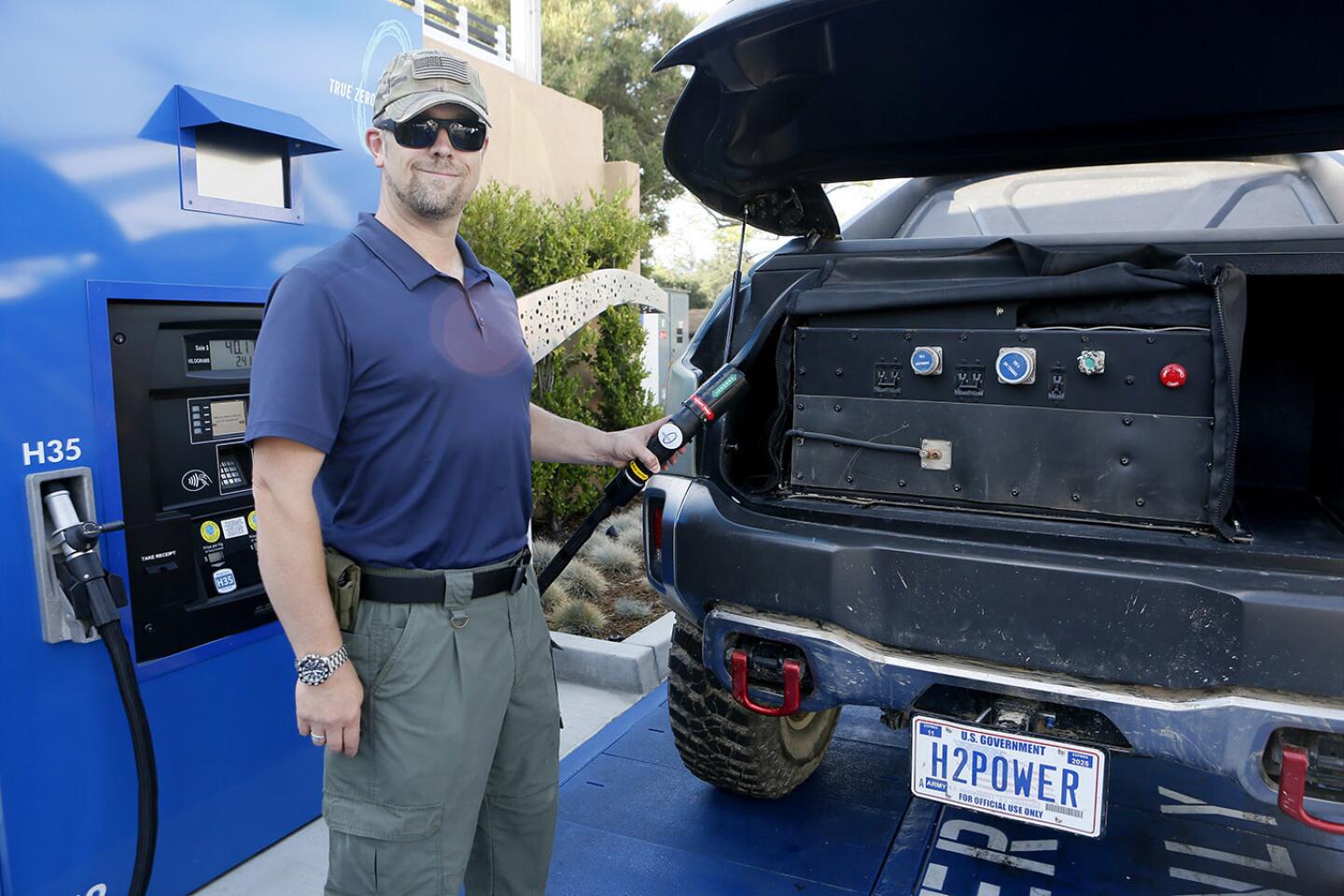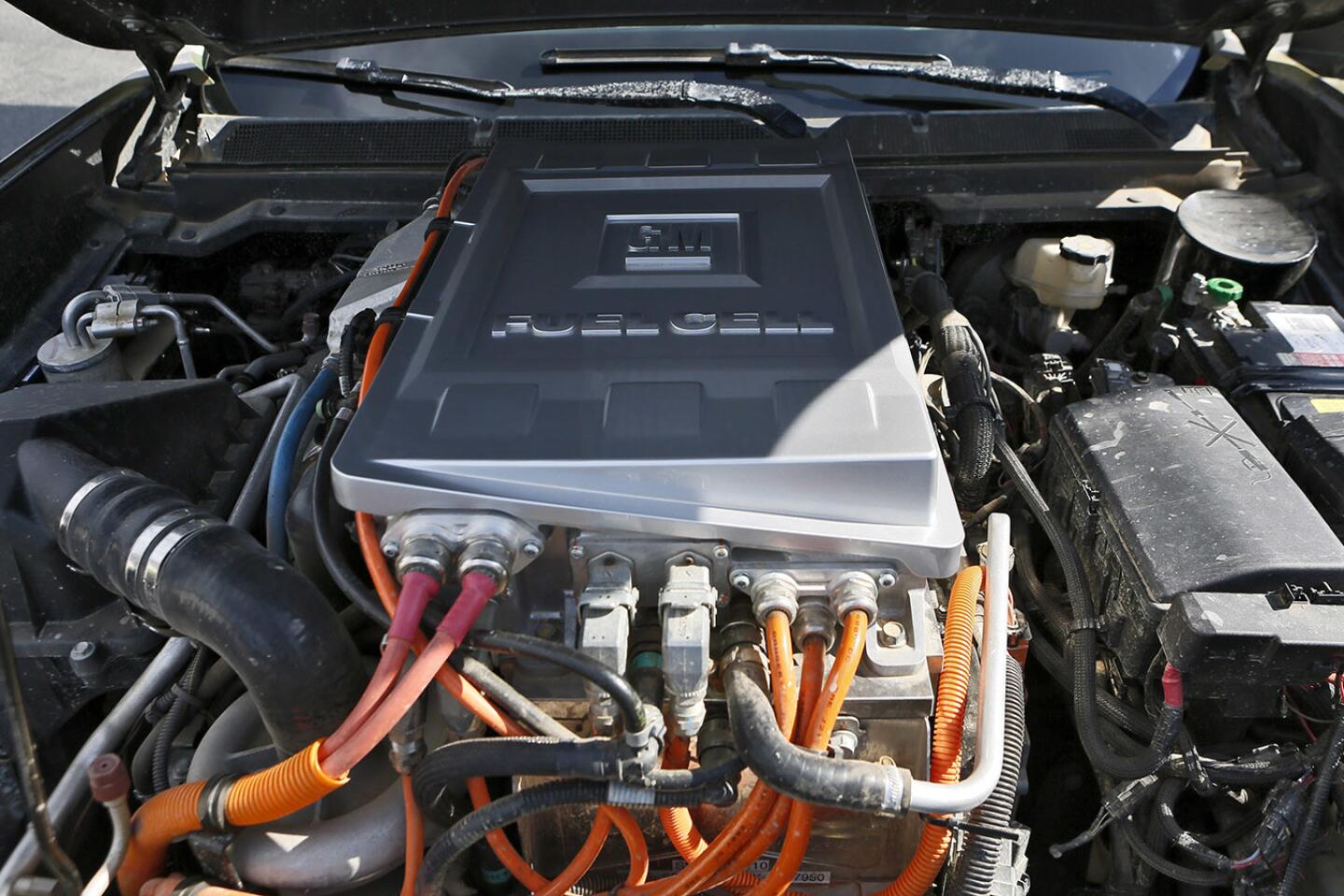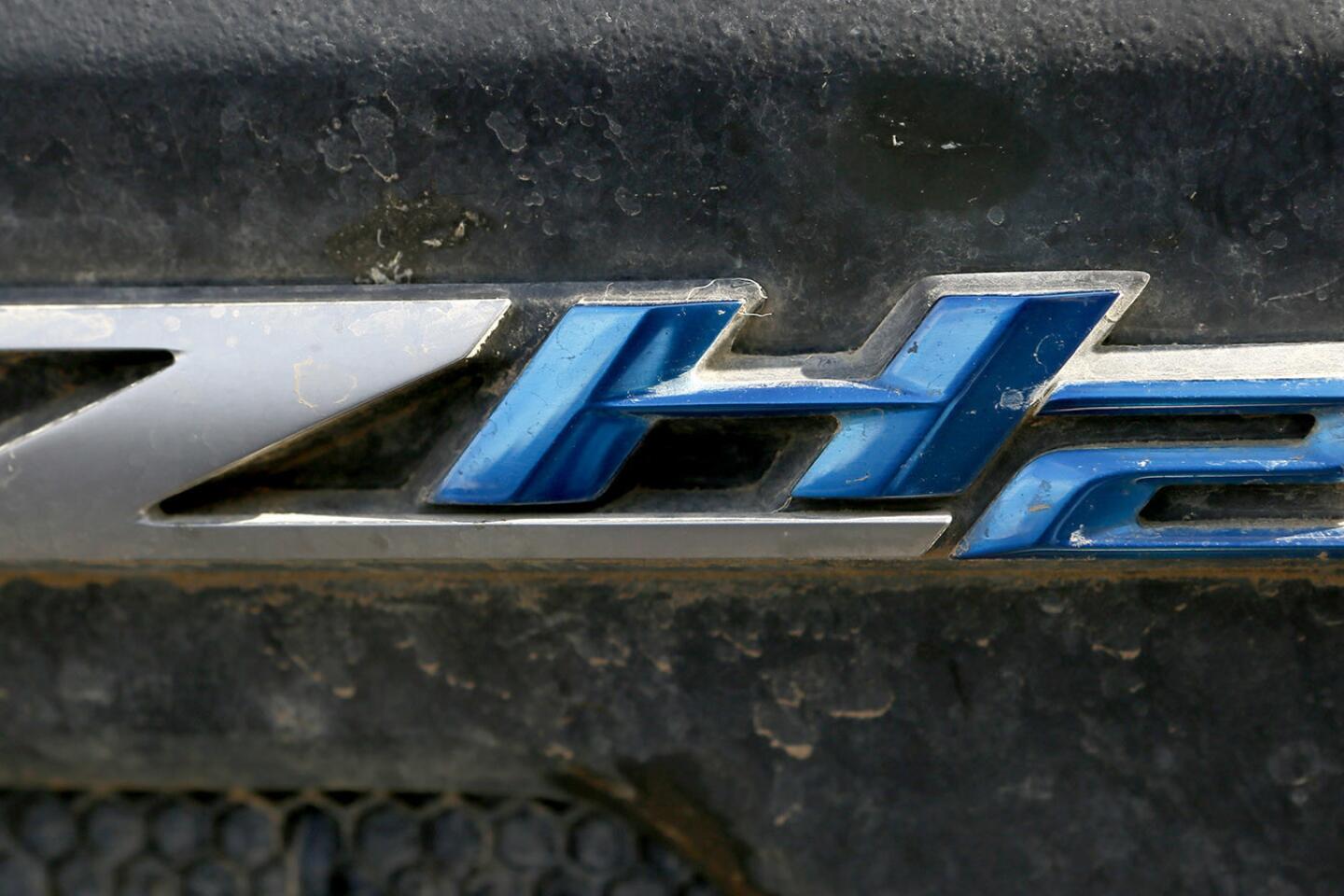GM, Army engineers sound off on potential benefits of hydrogen-fueled electric fleet in truck demo
- Share via
General Motors has developed a hydrogen fuel-cell powered electric truck, in cooperation with U.S. Army engineers, that can move quickly and stealthily over sand and rocks, acting as a zero-emissions power generator capable of creating water as a by-product.
Representatives of the automaker and members of the Army’s Tank Automotive Research, Development and Engineering Center (TARDEC) showed off a prototype model of a ZH2 hydrogen fuel-cell electric Chevy Colorado truck last week at the ARCO gas station in La Cañada Flintridge, which opened a hydrogen fueling station to the public in January 2016.
The team took photos of the vehicle — designed by GM to meet Army capabilities and now being evaluated and test driven by Army soldiers nationwide — at the station and topped off the tank while they were there.
Joe Mercurio, manager of new business development for GM, said the vehicle manufacturer has been working for years to realize the applications of fuel cell technology for high-level military use. Developing the Chevy Colorado unit took about nine months to build out from frame to completion.
“There’s a big advantage in the sound element,” Mercurio said, explaining the truck is 10 times quieter than its diesel-run counterpart. “And water vapor is the emission, so if you think of operations in the desert, the vehicle itself could produce some amount of water.”
The Chevy Colorado prototype has an electric generator installed in what would typically be the truck bed that powers the vehicle and, according to TARDEC engineer Dan Maslach, is capable of providing up to 240 volts of power.
“Now, instead of having a generator you could have this,” Maslach said, listing the benefits to not only drivers, but medical units in need of finding a mobile power source to operate life-saving equipment.
The Colorado’s electricity is generated from compressed hydrogen stored in the front of the vehicle that combines with oxygen, as opposed to a chargeable battery. The hydrogen can be resupplied or derived from multiple sources, from the Army’s JP-8 jet fuel to solar to wind power, making it more adaptable to its environment.
Project manager and chief Army engineer Brian Butrico said the feedback from those who’ve taken the prototype out for a spin has been largely positive.
“The soldiers are kind of blown away that this has this level of performance,” he said. “Every time we bring this to the soldier scouts and special ops, they’re giving us more ideas of what we can use this for.”
So far, GM has invested nearly $3 billion in the technology needed to bring the Chevy Colorado ZH2 to life. Butrico said partnering with GM on the development and evaluation of the vehicle made good financial sense.
“They’re going to be creating thousands of these units, so if we can take advantage of that, it helps us save a lot of costs,” he said.
GM’s partnership with the Army’s TARDEC comes as hydrogen fuel cell development for the consumer market continues to grow, including at the La Cañada hydrogen station, where fuel-ups have steadily increased since a dispenser was installed 18 months ago.
Shane Stephens is the co-founder and chief development officer of FirstElement Fuel, which has so far installed 17 True Zero hydrogen fueling stations statewide with support from the California Energy Commission and automakers Toyota and Honda. In a recent interview, Stephens described the La Cañada ARCO Station as a bit of a hotspot.
“We’ve been pleasantly surprised with how well it’s done since it opened,” he said, reporting more than 4,500 fill-ups since last January. “It took off a little faster than we expected.”
Stephens estimates there are now about 2,200 fuel cell cars on California freeways right now, but more are coming. Hyundai, he says, is aiming to sell 3,000 units by 2019, while GM, BMW and Mercedes have plans to produce their own fuel-cell brands by 2020.
FirstElement has calculated that the amount of hydrogen dispensed at the La Cañada ARCO station alone has fueled some 989,000 zero-emission miles, saving 620,000 pounds of carbon dioxide — an effort equivalent to reducing oil use by 1,000 barrels or planting a forest 2.3 times the size of Disneyland.
Twitter: @SaraCardine





